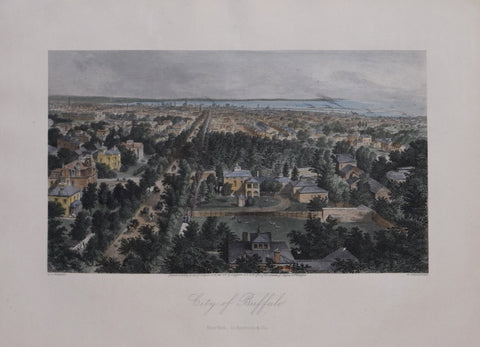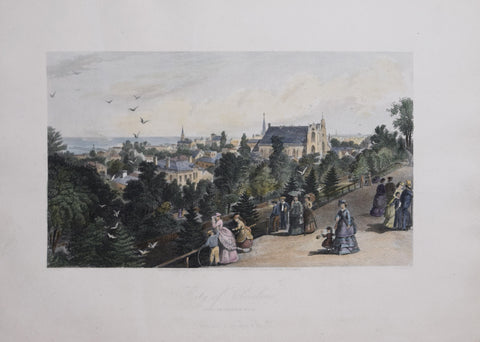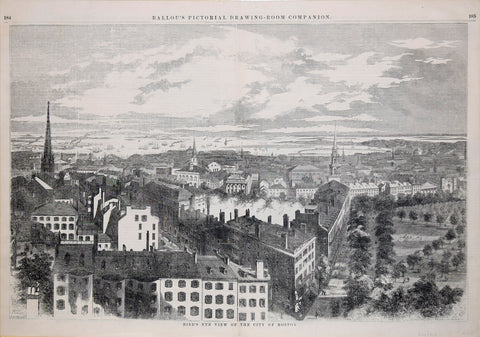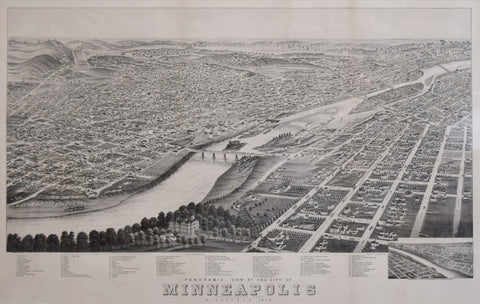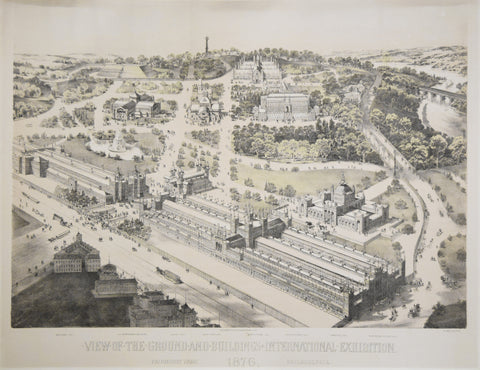
Charles W. Burton (dates unknown), Jersey City, New York
Jersey City, New York
from Staten Island / New York from Staten Island, Brooklyn City.
Published: New York, Sarony & Major, 1849.
Tinted lithograph, Sketched and drawn by Charles Burton
Sheet size: 30 ¼” x 41 ½”
Charles W. Burton’s double view of New York is an exceedingly rare print. In addition to the Arader copy, Rare Book Hub lists only two sales of the undivided sheet which reach as far back as 1965 (Godspeed) and 1910 (Anderson Galleries). The Arader copy is in excellent condition; it was formerly owned by the Down Town Association in New York.
In his monumental study on the “Iconography of Manhattan Island” Stokes (1918),p. 701 records the rarity of the present double view by emphasizing that it is the “only known state” of Charles W. Burton’s composition. Indeed, the two segments were meant to be cut apart and mounted as a panorama whose fascination in the first half of the 19th century derived from milestones such as Barker’s Rotunda in Leicester Square or paintings by the perspectival specialist John Vanderlyn. Although the lithograph by Charles Burton is not illusionistic in the same way as these public spectacles, it caters to a popular and mainly bourgeois taste in documenting trade, economic, and urban growth. It thus partakes in the American heritage of the Golden Age of printing, combining technical mastery with a keen sense of observation that was shared - among others - by Burton’s contemporaries John Bachmann (1790-1874) and John Bornet (active, 1850s). The level of detail is remarkable and landmarks such as Castle Garden or Trinity Church are clearly distinguishable; a legend runs below the city views. The composition itself obeys the traditional juxtaposition of elements from the foreground to the background. The perspective does not change and both segments are seen from a lowered bird’s-eye-view so characteristic of mid-19th century city panoramas. It should also be noted that the high artistic standards of both Burton and his publishers Sarony & Major were the result of Napoleon Sarony’s experience as illustrator for Currier & Ives in the 1830's. All of this confirms the exceptional status of the present lithograph as both a collector’s item and a highly detailed record of urban development spanning from Hoboken and the Elysian fields -believed to be the site of the first baseball game - to the iconic tower of New York City Hall in the far right. Lit. Isaac Newton Phelps Stokes: “The Iconography of Manhattan Island”, New York 1915-1928.
We Also Recommend

